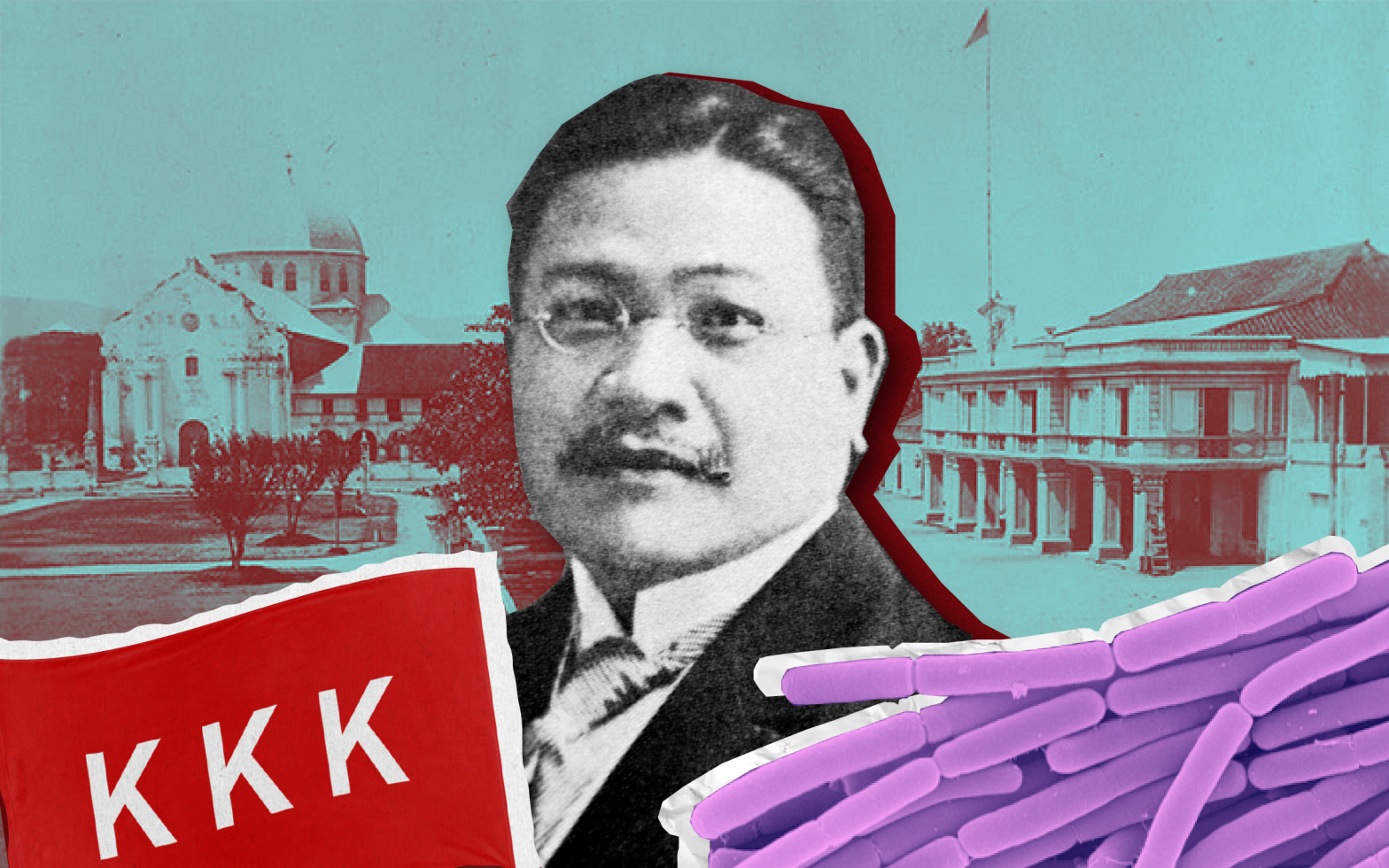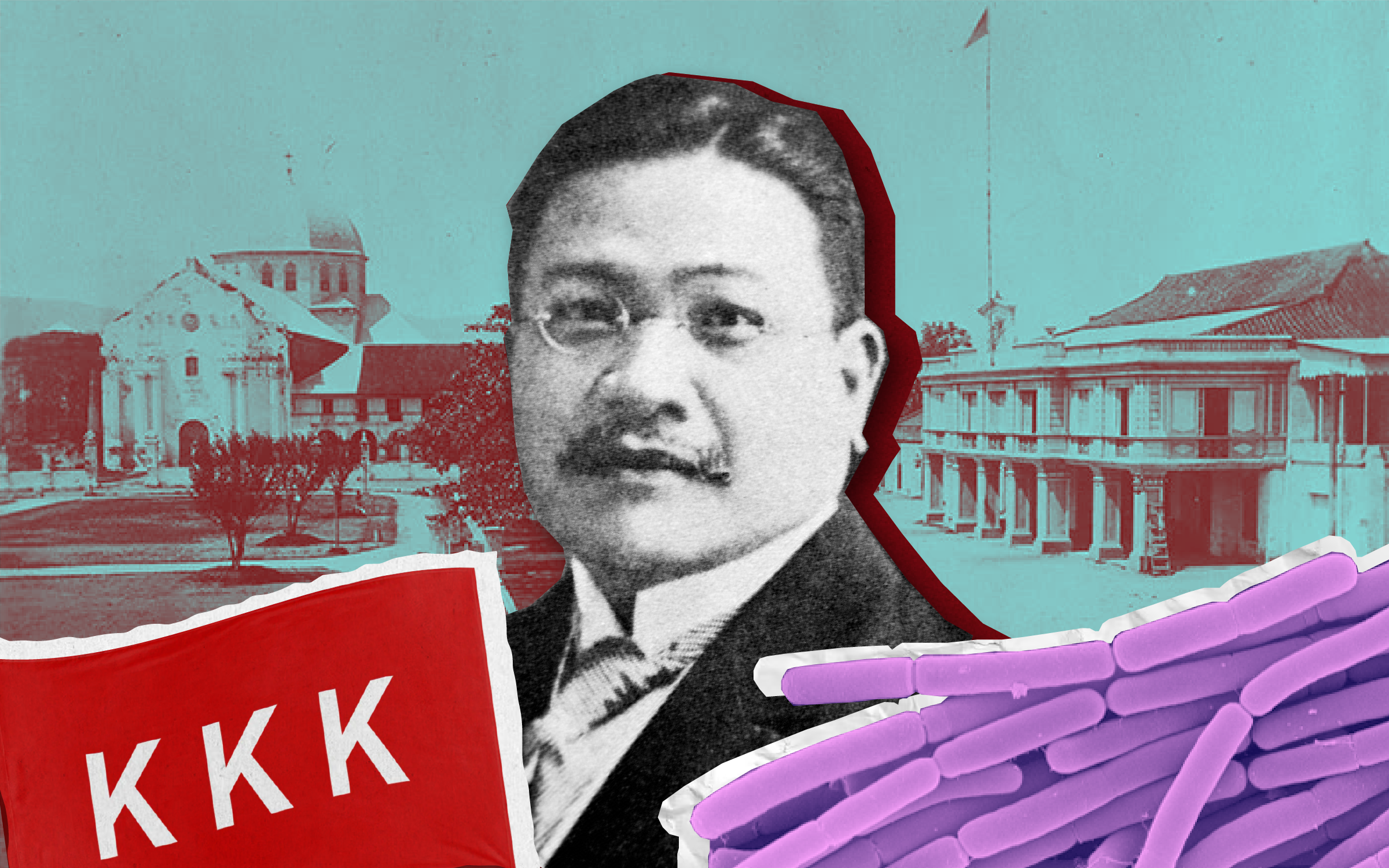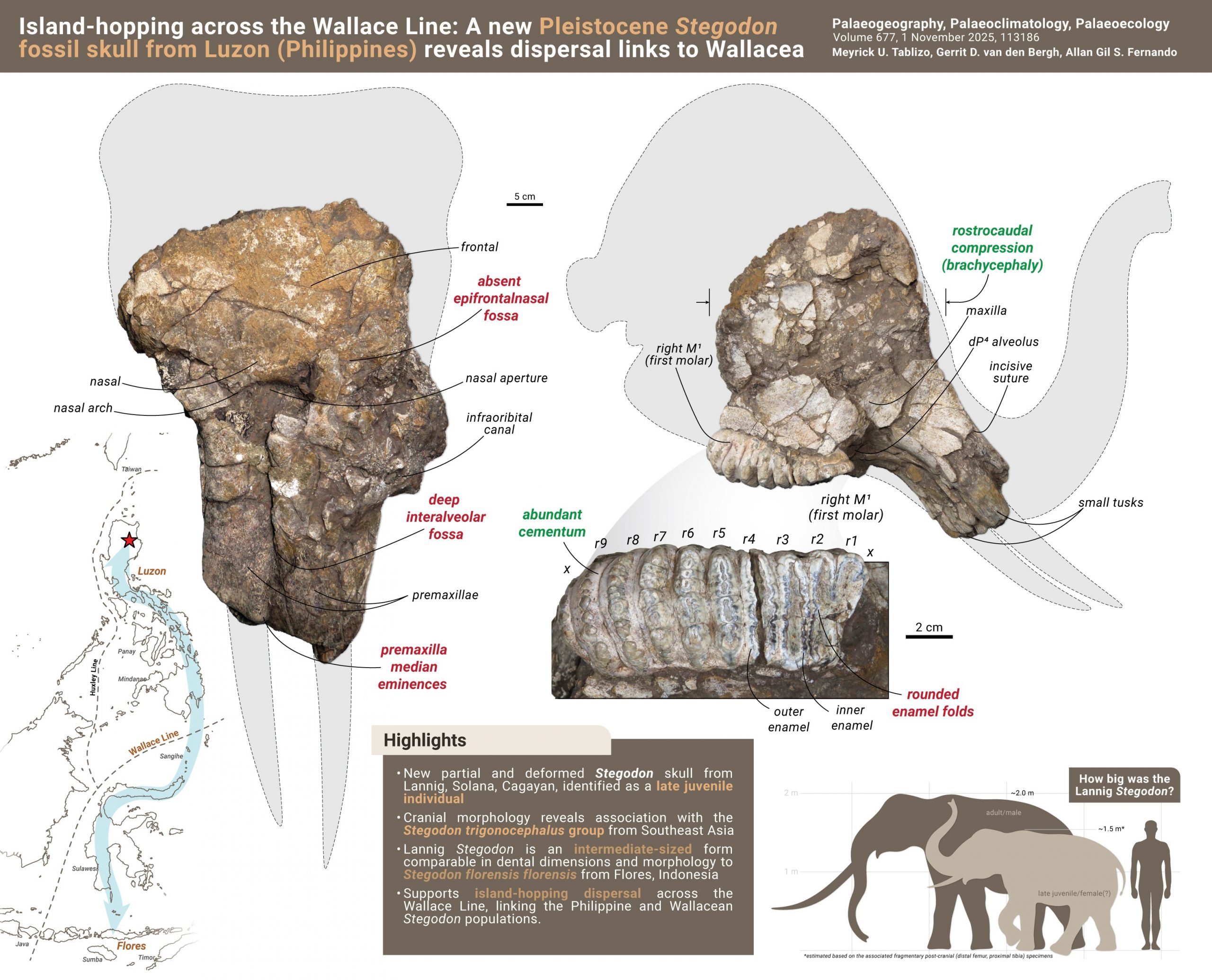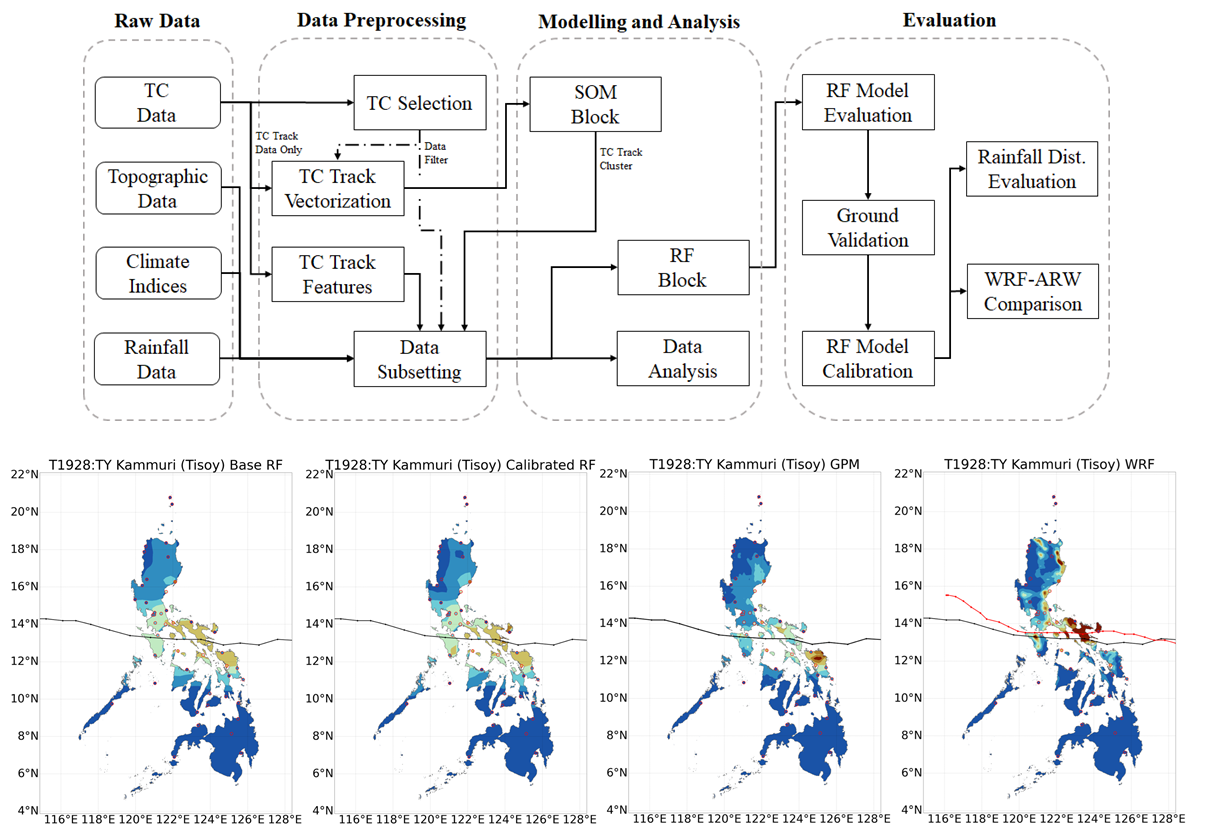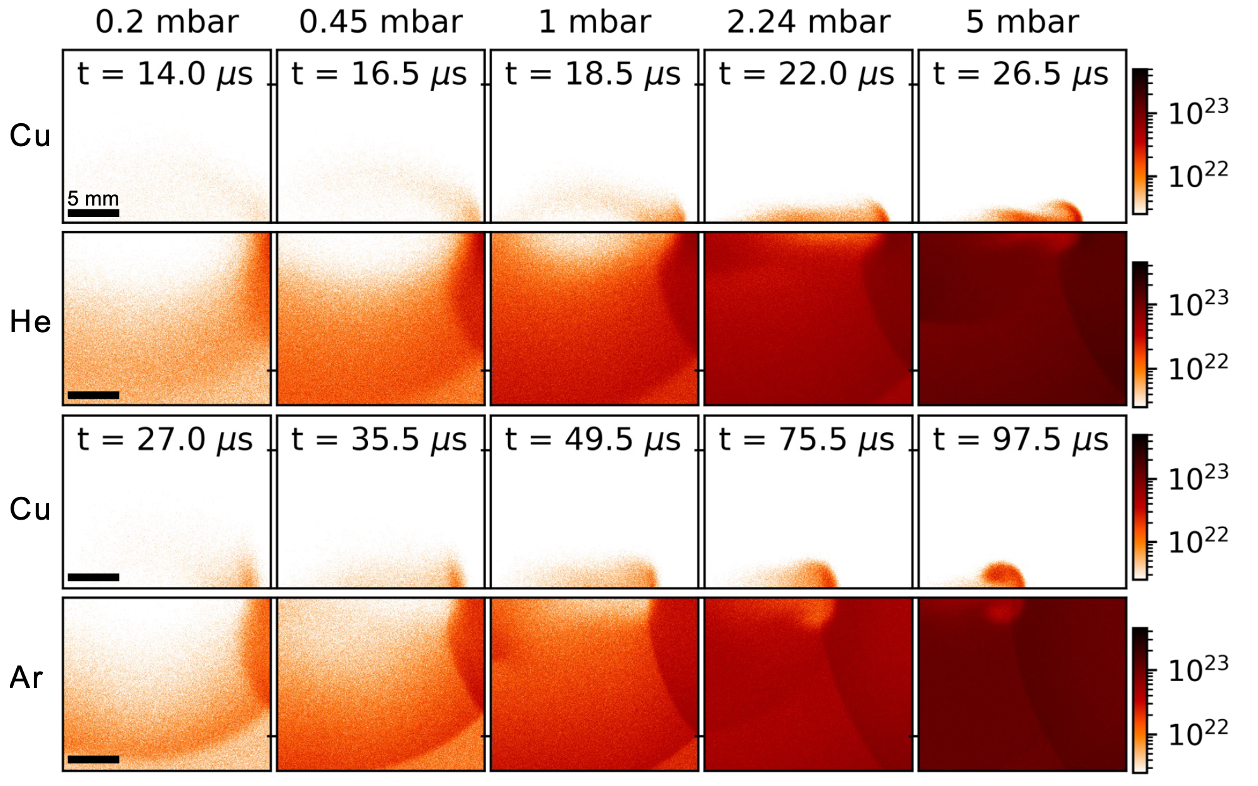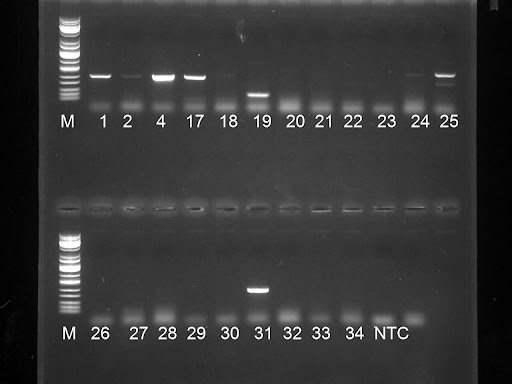UPD scholars win best presentations in 13th ASTHRDP Graduate Scholars’ Conference
Published: September 25, 2025
By: DOST-ASTHRDP Staff
Edited By: Eunice Jean C. Patron
Four scholars from the University of the Philippines – Diliman College of Science (UPD-CS) took home the award for best presentations in the 13th Accelerated Science and Technology Human Resource Development Program (ASTHRDP) Graduate Scholars’ Conference, held on September 18-19, 2025 at the Limketkai Luxe Hotel in Cagayan de Oro City, Misamis Oriental.
The winners were awarded a P10,000 cash prize and certificates of recognition in multiple categories and types of presentations:
Marsden Badlisan, an MS Physics student, won the best Oral Presentation in Physical Sciences for his thesis on “Electrically Controlled Goos-Hänchen Shift of a Light Beam due to a ZnO-GaAs Structure.”
Nicole Joy Datu received recognition for the best Oral Presentation in Mathematical and Computational Science. Her dissertation as a PhD Mathematics student was titled “On Strongly Φ-Reversible Elements of the Symplectic Group.”
Miguel Revilla claimed the best Oral Presentation in Environmental Sciences for his doctoral dissertation in Meteorology on “Spatio-temporal and Surface-level Analysis of Tropical Cyclones Maintaining or Intensifying in the Philippines.”
Wendell Manuel, an MS Materials Science and Engineering scholar, won the best Poster Presentation in Physical Sciences for his thesis entitled “Tuned FeO/Fe3O4 Nanoparticles and Superclusters for Enhanced Magnetic Hyperthermia.”
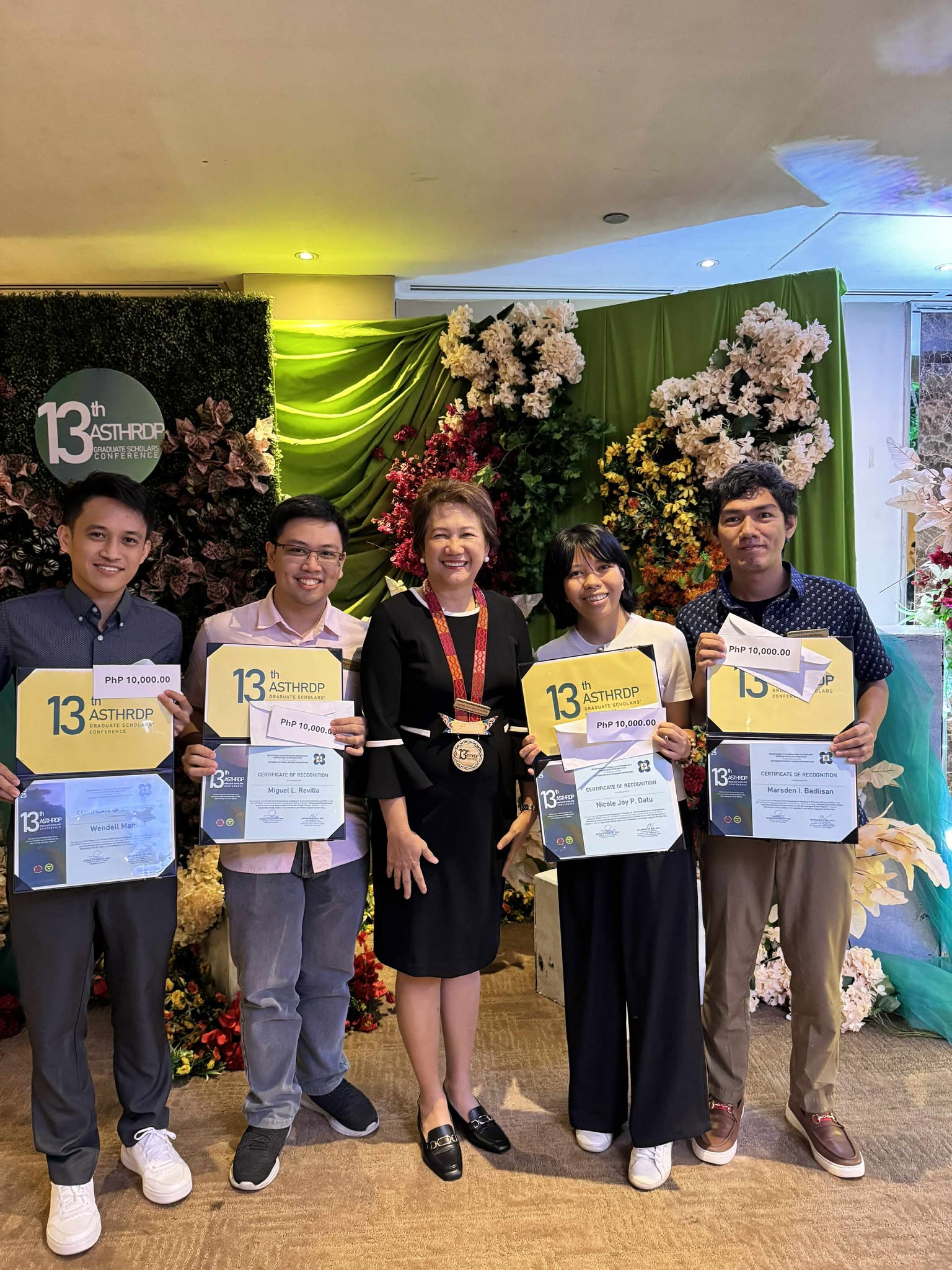
Organized annually by the Department of Science and Technology – Science Education Institute (DOST-SEI) in collaboration with the National Science Consortium, this year’s conference was hosted and chaired by the Mindanao State University – Iligan Institute of Technology (MSU-IIT), with Central Luzon State University (CLSU) serving as co-chair.
With the theme “Advancing Climate Action and Environmental Stewardship for the Well-being of Every Filipino,” the conference provided a platform for scholars to present their thesis or dissertation outputs to fellow scholars and academics. Furthermore, it aimed to promote research collaboration opportunities and the exchange of knowledge and experiences on the latest trends and developments in science and technology.
Attending the prestigious two-day conference were 200 scholars, scientists, and project leaders from across the country. Among these were 21 scholars from UPD who were slated to showcase their research outputs across the five presentation categories. The university’s delegation was led by Dr. Cynthia Saloma, the ASTHRDP project leader and Dean of UPD-CS.
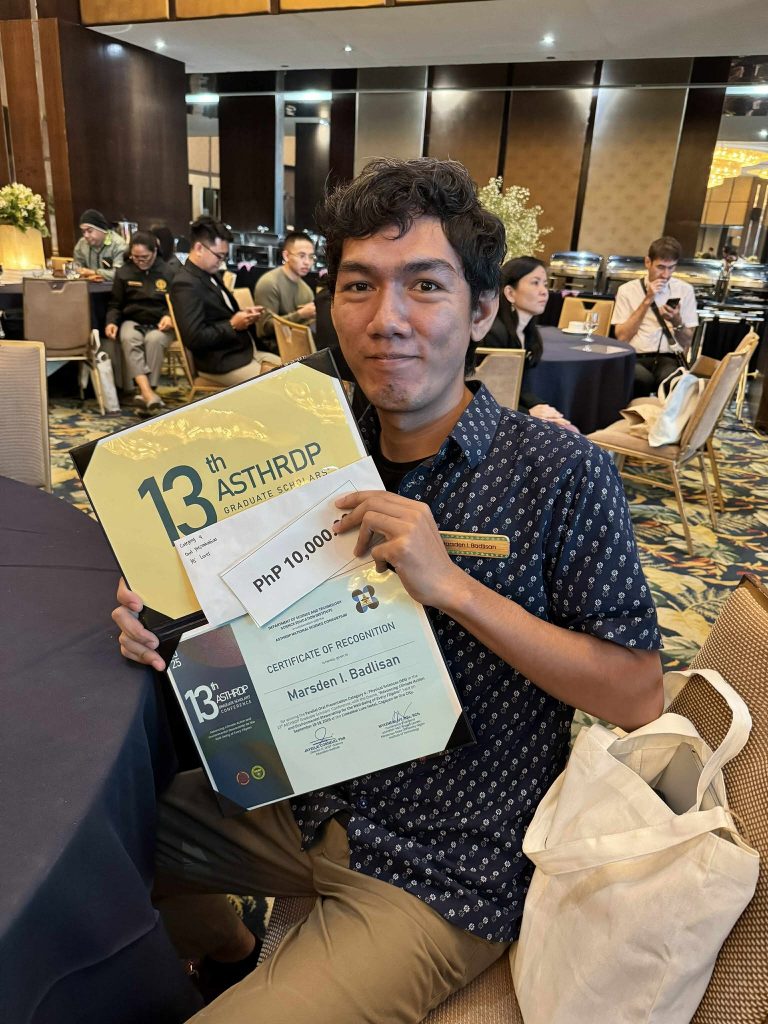
Marsden Badlisan: “I would like to acknowledge and thank the DOST-ASTHRDP for the opportunities and support they provided. The DOST-ASTHRDP is not just a scholarship — it uplifts a nation through science and innovation.”
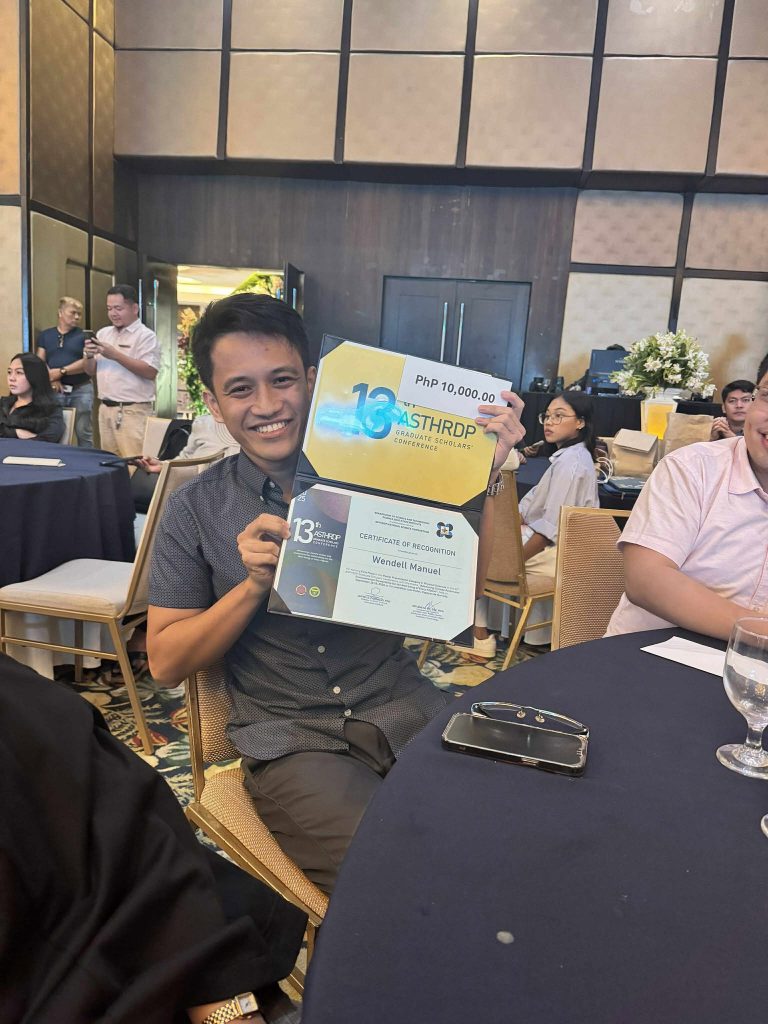
Wendell Manuel: “Our study shows how small (nano) things can potentially make a big impact. This would not have been possible without the support of my adviser, our international partners, and of course, DOST.”
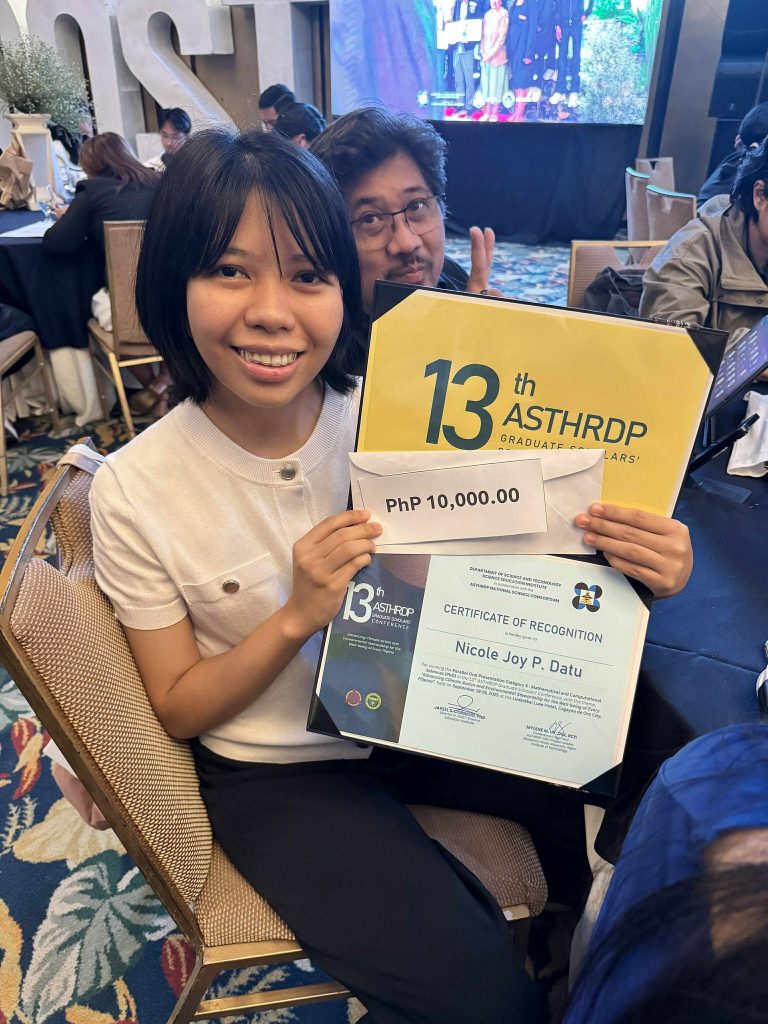
Nicole Joy Datu: “I am deeply grateful to DOST-SEI for supporting young researchers like me. Growing up, I was told math was only for the naturally talented, but I’ve learned that hard work and the right support can take you just as far. I hope this inspires others, especially women, to pursue mathematics and science.”
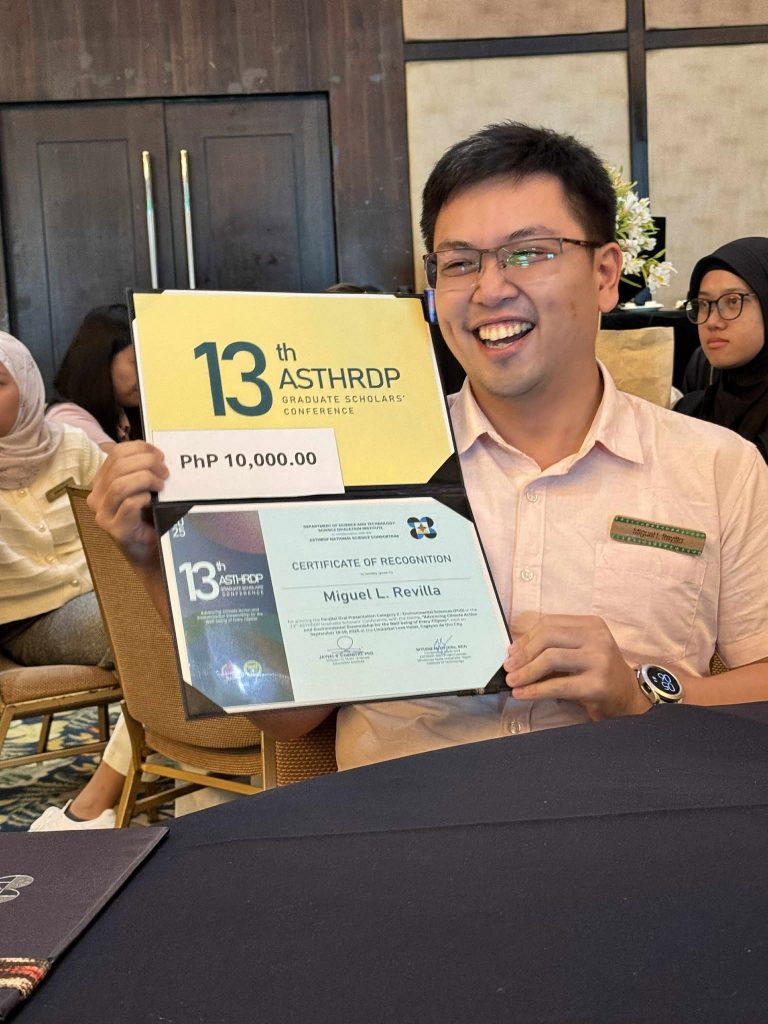
Miguel Revilla: “Thanks to the DOST-ASTHRDP scholarship, it has become easier for aspiring meteorologists to do research that not only expands our knowledge of the environment but could also help the country in disaster preparedness.”
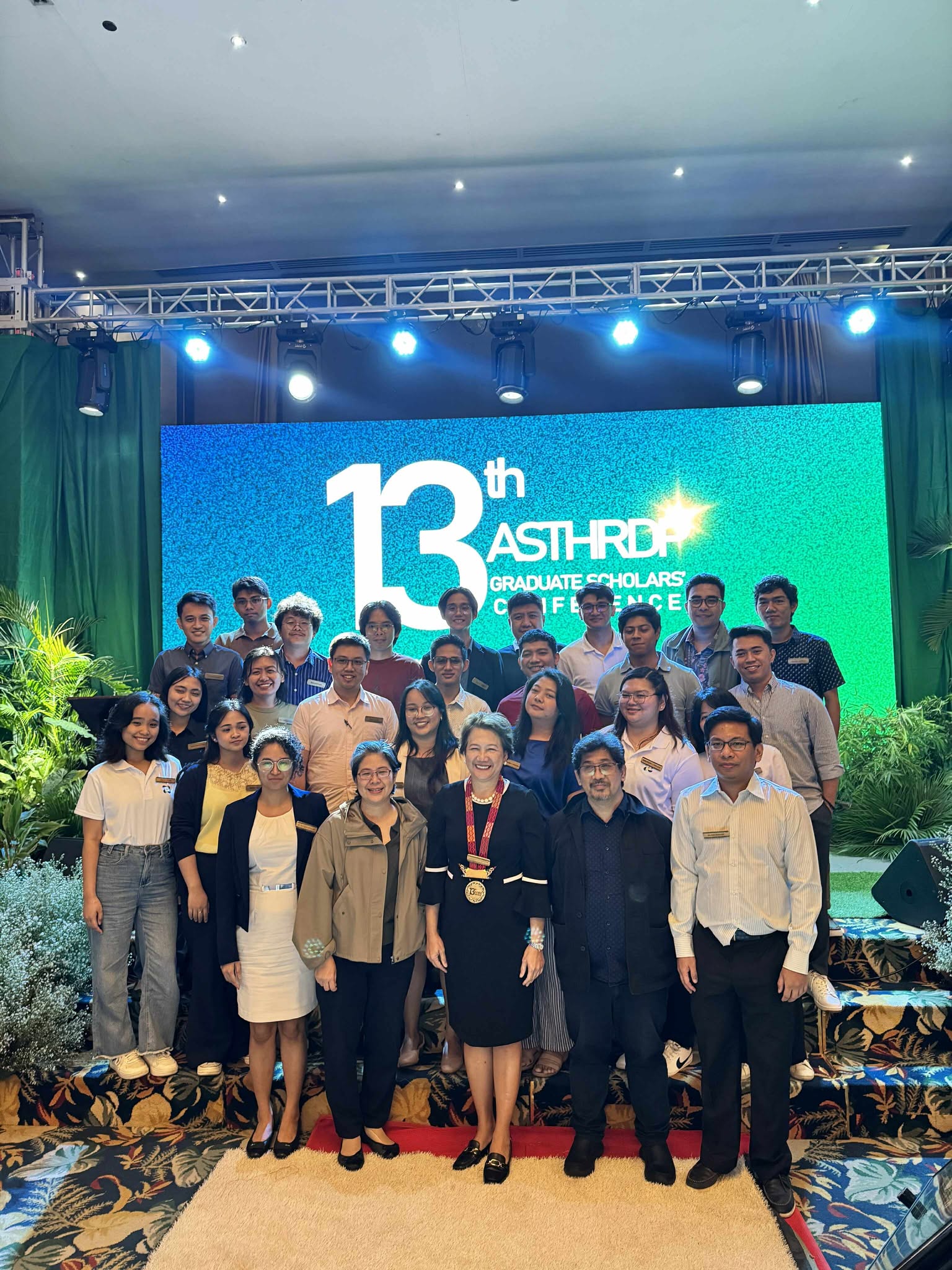
The event commenced with an opening program featuring the Integrated Performing Arts Guild and the singing of the national anthem and a doxology led by the MSU-IIT OCTAVA Choral Society. Welcoming remarks were delivered by MSU-IIT Chancellor Prof. Alizedney Ditucalan, JD, LLM and DOST Regional Director Engr. Romela Ratilla, followed by opening remarks from DOST-SEI Director Dr. Jayeel Cornelio.
The keynote address was delivered by DOST Secretary Dr. Renato Solidum Jr., who urged scholars to conduct their research beyond classrooms and laboratories and bring science-informed solutions directly to communities that need them the most. This was followed by a message of support from DOST Undersecretary for Science and Technology Services Ms. Maridon Sahagun. The conference proceedings were officially kicked off with a ribbon cutting ceremony and the unveiling of the scholars’ poster exhibits.
Scholars presented their thesis or dissertation outputs in five thematic categories: Agricultural Sciences, Environmental Sciences, Biological and Health Sciences, Physical Sciences, and Mathematical and Computational Science. Oral and poster presentations were evaluated by a panel of academic experts, which included UPD faculty members Dr. Alvin Acebedo, Dr. Eizadora Yu, Dr. Gennevieve Macam, and Dr. Giovanni Tapang.
Plenary lectures featuring calls to action on climate change were also delivered by distinguished scientists such as Fr. Jose Ramon Villarin, S.J. Ph.D. of Ateneo de Manila University and Dr. Ronilo Jose Flores of UP Los Baños. The second day featured equally insightful talks from Dr. Laura David of UPD and Dr. Hernando Bacosa of MSU-IIT.
A lively fellowship dinner capped off the first day, showcasing song and dance numbers and a spoken word and multimedia presentation by the scholars.
The conference concluded with the awarding of winners in each presentation category. Certificates of appreciation were also given to all participants and speakers. Finally, the program ended with closing remarks from Dr. Elaida Fiegalan, conference co-chair and ASTHRDP project leader in CLSU.
ASTHRDP is a graduate scholarship program implemented by DOST-SEI in collaboration with the National Science Consortium, which is composed of eleven member universities all across the country. The program aims to accelerate the production of high-level human resources needed for research and development in priority Science and Technology areas. By supporting Master in Science and Doctorate students, ASTHRDP seeks to help improve the country’s global competitiveness and capability to innovate through Science & Technology. More information about the DOST-ASTHRDP Scholarship can be found here: https://science.upd.edu.ph/dost-asthrdp.
For interview requests and other concerns, please contact media@science.upd.edu.ph.

